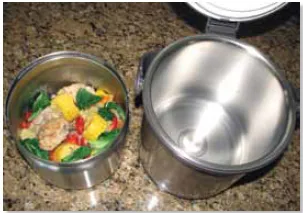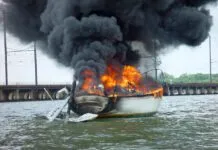The humble vacuum flask, or thermos, is one of those 19th century technologies that has withstood the tests of time. Originally a delicate, double-walled, glass vessel, the vacuum flask was given a new lease on life in 1978, when Thermos introduced a stainless-steel version. The ultimate domestic iteration of this, however, is the thermal cooker.
Unlike pressure cookers, which use heat and pressure to cook foods quickly, or slow-cooking Crockpots, which require a constant heat source, thermal cookers rely on thermal mass, retained heat, and insulation to maintain temperature and “cook” the contents. Basically, the thermal cooker is a large, stainless vacuum flask containing one or two fitted saucepans. The contents of the stainless saucepan are brought to boiling point on the stove, and then the pan is immediately placed in the vacuum flask (insulated base). The insulation traps the heat in the food and uses it as the heat source for cooking the contents. Hours later, once the contents are fully cooked, the dish requires only minimal re-heating before serving.
The main advantages of cooking with a thermal cooker are the cooking-fuel (or power) savings and the convenience of being able to safely cook a meal while underway—without constant stove-tending or worry over spilled pots—even in foul weather, when slaving over a galley stove can prove challenging and dangerous. Single-handers will particularly appreciate the ability to prep a meal before raising the anchor, leaving it to cook while sailing, and then enjoying it later—whether that’s once the anchor is dropped or when the night watch begins.
The shorter stovetop-cooking time also means the cabin isn’t turned into a sauna, a plus for those in temperate and tropical climates, and there is less danger of burned food getting stuck on the pans—a common problem with some pressure cookers— making dish-washing easier.
Thermal cookers come in a range of sizes, from single-serving size (1.5 liters) to family sizes (4.5, 6, and 8 liters). They also are available with locking lids, making them a safer choice for cooking underway than standard nesting cookware. While they may be a bit bulkier than some pressure cookers we’ve tested, their low-profile handles make them easier to store.
Thermal cookers are ideal for cooking stews, casseroles, soups, desserts, and other dishes. You’ll find some good recipes online.
For more cooking aboard, download Comprehensive Galley and On-board Cooking Guide 2: Stoves, Ovens and Grills from Practical Sailor.









































